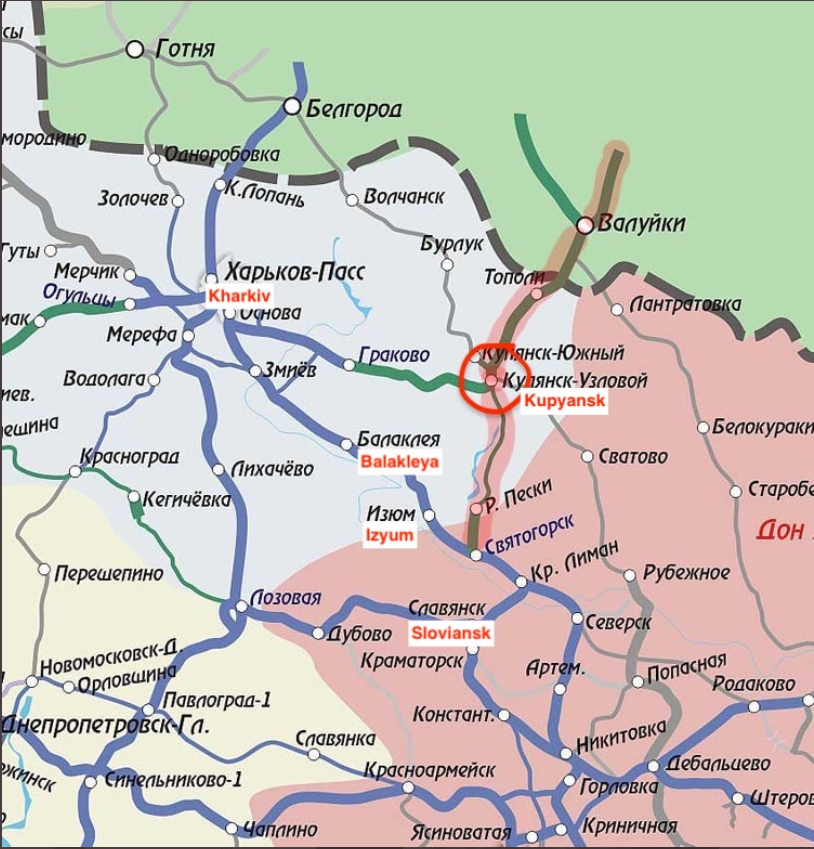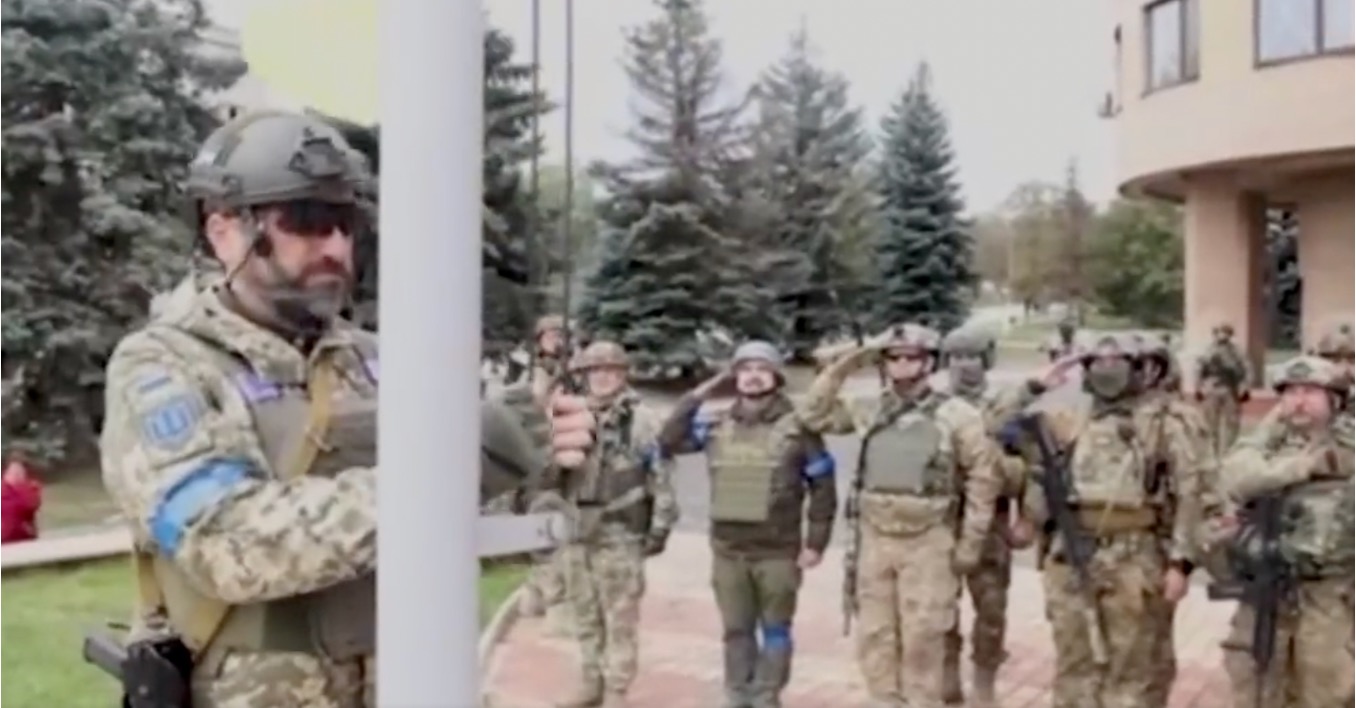Follow us on Telegram for the latest updates: https://t.me/mothershipsg
In early September 2022, the armed forces of Ukraine launched a rapid offensive into Russian-held territory in its north-east region near the city of Kharkiv.
The speed at which the Ukrainians reclaimed its lost territory surprised many observers, including the Russians themselves.
On Sep. 9, the Ukraine Ministry of Defence quoted President Volodymyr Zelensky, who said, "Since Sep. 1, Ukrainian forces liberated more than 1,000 square kilometres of our territory."
The ministry pointed out that this constituted an area bigger than either Singapore or New York City.
.@ZelenskyyUa
— Defense of Ukraine (@DefenceU) September 8, 2022
"Since September 1, Ukrainian forces liberated more than 1,000 square kilometers of our territory."
A territory larger than Singapore or New York City.
On Sep. 10, the UK Ministry of Defence released a defence intelligence update on the Russian invasion.
"Ukrainian forces launched offensive operations in the south of Kharkiv Oblast on 06 September 2022. Lead elements have advanced up to 50km into previously Russian held territory on a narrow front.
Russian forces were likely taken by surprise. The sector was only lightly held and Ukrainian units have captured or surrounded several towns.
A Russian force around Izium is likely increasingly isolated. Ukrainian units are now threatening the town of Kupiansk; its capture would be a significant blow to Russia because it sits on supply routes to the Donbas front line.
With Ukrainian operations also continuing in Kherson, the Russian defensive front is under pressure on both its northern and southern flanks."
Strategic importance of the north-east
It added in another Sep. 11 update that fighting continues around the "strategically important cities of Kupiansk and Izyum."
A railway map of northeast Ukraine may demonstrate the significance of these cities.
If the Ukrainians succeed in holding these railway hubs, Russian forces in eastern Ukraine will be cut off from supply routes to the north.
 Pic from Twitter.
Pic from Twitter.
The New York Times reported that Izyum's mayor Valeriy Marchenko stated that Ukraine had retaken Izyum.
Meanwhile, the Independent quoted officials who confirmed that Ukrainian troops had entered Kupiansk.
Bloomberg reported that Russia's own defence ministry confirmed the pullout of troops from Izyum and other areas, and said that it was done to reinforce positions in Donetsk, further east.
Financial Times noted that the Russian retreat is one of "President Vladimir Putin’s biggest setbacks" since the invasion of Ukraine on February 24, and "could prove a turning point, involving the capture of thousands of Russian soldiers and their equipment".
Shipments of HIMARS
Over the past few months, Russia advanced deep within Ukraine's eastern region, managing to capture the industrial cities of Sieverodonetsk on June 25, and Lysychansk on July 3 after heavy fighting.
However in July, the United States provided further military aid to Ukraine, including shipments of high mobility artillery rocket systems (HIMARS).
The Ukrainian military used these advanced weapons to target Russian supply depots and ammunition dumps, thereby putting a strain on their logistics and supply capabilities.
HIMARS have a longer range and are more precise than the Soviet-era artillery Ukraine previously used.
The Singapore Armed Forces also includes HIMARS in its ranks.
A diversion
Ukraine then threatened an offensive into the southern region around the strategically-important city of Kherson, which was one of the first Ukrainian cities to fall, in March 2022.
The Ukraine military reportedly used HIMARS to target bridges used by Russian troops to access and resupply Kherson.
This led to the Russians shifting large numbers of troops from other areas in occupied Ukraine to Kherson, including troops from the east. Ukraine announced its offensive on Aug. 29, with the White House confirming that Russia had "depleted" several units in the east to reinforce Kherson.
However, the much-publicised southern offensive appears to have been a feint.
The Guardian quoted Taras Berezovets, a former national security adviser turned press officer for a Ukrainian special forces unit, who said, "[It] was a big special disinformation operation", apparently echoing Putin's insistence to refer to his invasion as a "special military operation" instead of a war.
Berezovets added, "[Russia] thought it would be in the south and moved their equipment. Then, instead of the south, the offensive happened where they least expected, and this caused them to panic and flee."
However, the Institute for the Study of War, a think tank, observed that Ukrainian forces near Kherson are maintaining a strict operational silence, which may mask an actual ongoing offensive there.
Unverified videos of Russian retreat
Unverified videos on social media from users tracking the war in Ukraine appear to show equipment and armour abandoned by Russian forces in their retreat.
Two captured Russian T-72B3 tanks, MT-LB, and a fourth vehicle. pic.twitter.com/UFN38NsvXJ
— Rob Lee (@RALee85) September 11, 2022
Other videos also showed Ukrainian soldiers hoisting their nation's flag in towns and cities that were previously occupied by the Russians.
The town of Balakliya, Kharkiv region, is liberated by Ukrainian troops!
— Defense of Ukraine (@DefenceU) September 10, 2022
The Commander of Ukrainian Land Forces, Hero of Ukraine, Colonel General Oleksandr Syrskyi is leading the Ukrainian offensive in this sector.
The Ukrainian flag has been raised in the town centre. pic.twitter.com/zQ8ngDitZw
NYT pointed out that the news of Ukraine's success comes at a crucial time, as winter approaches.
"The success of the Ukrainian offensive in the north comes at a critical juncture. Besides lifting the country’s morale and short-circuiting Russian plans to annex occupied territory, it is arriving ahead of winter, when front lines are expected to freeze and a global energy crisis could strain the West’s support for Ukraine."
Top image from Ukraine Defence Ministry Twitter.
If you like what you read, follow us on Facebook, Instagram, Twitter and Telegram to get the latest updates.
